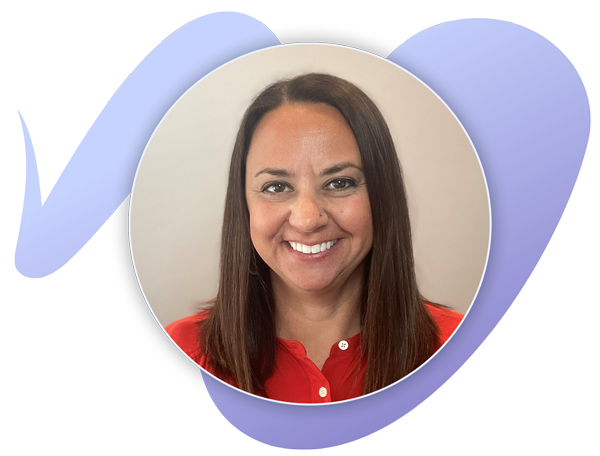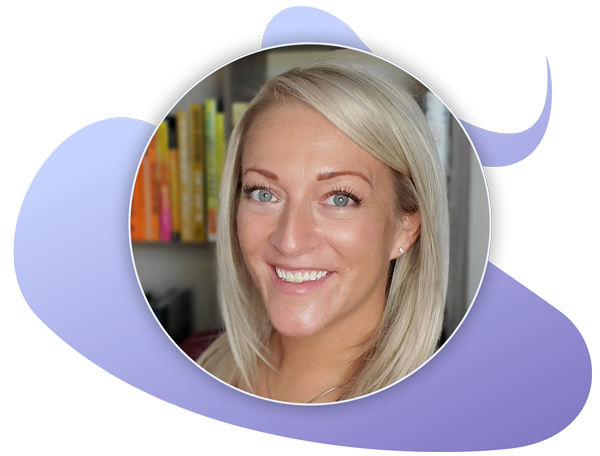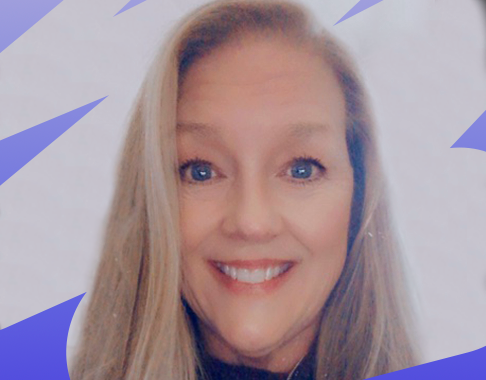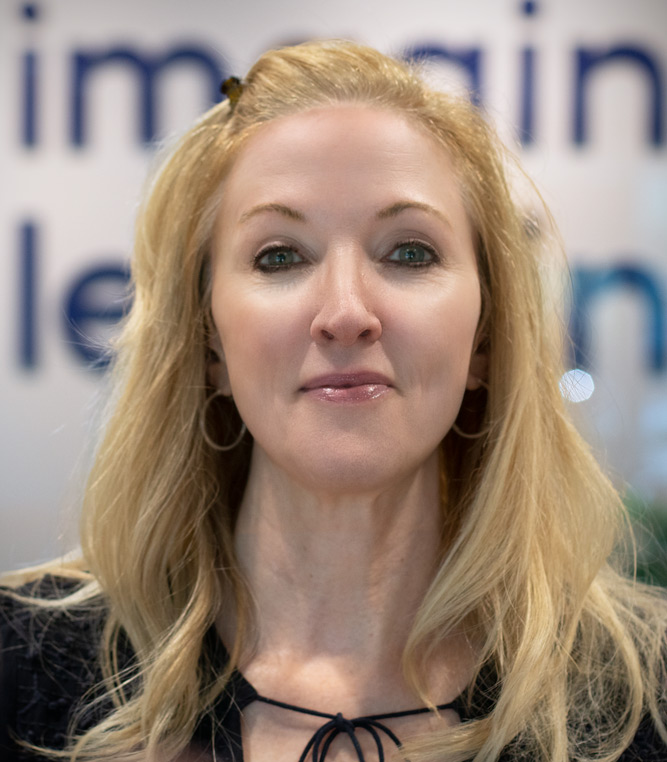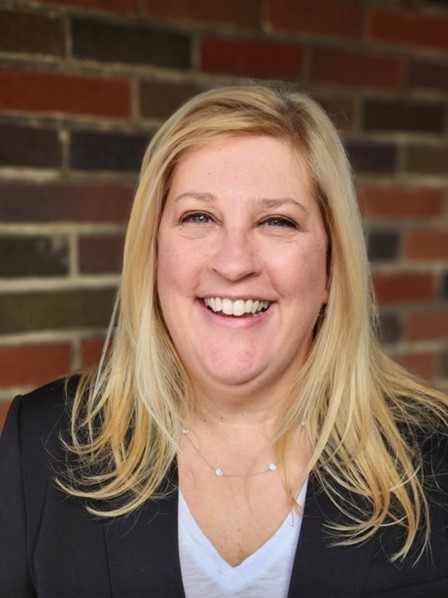May 2, 2023 1:00 pm
Imagine Learning Recognizes Top Schools with 2023 Imagine Nation School of Excellence & District of Distinction Awards
Over 300 schools nationwide are honored with the annual Imagine Nation Award, celebrating innovation, dedication, and exemplary usage of Imagine Learning digital solutions.
SCOTTSDALE, AZ: MAY 4, 2023 – Imagine Learning, the largest provider of digital curriculum solutions in the U.S., serving 15 million students in more than half the school districts nationwide, today announced the winners of the 2022–2023 Imagine Nation Awards, honoring schools and districts across the U.S. for their exceptional use of Imagine Learning solutions.
The Imagine Nation Awards are part of the Imagine Learning motivational program, igniting engagement and strengthening confidence for all learners. More than 21,000 schools and districts throughout the U.S. were eligible for the Imagine Nation Award.
“We’re proud of the commitment to learning shown by these schools and districts,” said Sari Factor, Vice Chair and Chief Strategy Officer. “It is our privilege to partner with educators across the country, and these awards serve to highlight their dedication to achieving greater learning outcomes for their students.”
Imagine Learning uses multiple measures, including usage and implementation data, to designate top schools and districts for the Imagine Nation Awards. The Imagine Nation Award is presented to schools and districts that demonstrate outstanding commitment to effective implementation of an Imagine Learning program throughout the year. Based on rigorous research, Imagine Learning has found that meeting program usage and implementation goals is directly associated with increased student success and academic growth.
Today, 301 schools and districts from across 42 states are receiving the honor of being named an Imagine Nation school for the 2022–2023 school year. Following official notification of the Imagine Nation Awards, each winning school or district will receive an Imagine Learning banner that displays their achievement. Find the full list of schools and districts being honored with an Imagine Nation Award below.
IMAGINE NATION AWARDS
Imagine Edgenuity
- Marengo High School, Marengo County School District, AL
- Academy of Excellence, Cave Creek Unified School District, AZ
- Rosedale Middle School, Rosedale Union School District, CA
- A.W. Dreyfoos School of Arts, The School District of Palm Beach County, FL
- Royal Palm Beach Community High, The School District of Palm Beach County, FL
- Central Educational Center 8th Grade Academy, Coweta County School System, GA
- ROE 11 Paris Beacons – TAOEP, ROE 26 – TAOEP, IL
- ROE 30 – Cairo – TAOEP, ROE 26 – TAOEP, IL
- Jefferson West High School, Jefferson West Unified School District 340, KS
- Ridgewood Middle School, Caddo Parish Public Schools, LA
- Acadiana Renaissance Charter Academy, Charter Schools USA, LA
- Gueydan High School, Vermilion Parish School System, LA
- Hamilton Christian School, LA
- Cadillac High School, Cadillac Area Public Schools, MI
- Chelsea High School, Chelsea School District, MI
- Innovations Academy, Shiawassee Regional Education Service District, MI
- Two Rivers High School, School District 197, MN
- Oxford High School, Oxford School District, MS
- Contentnea-Savannah K-8 School, Lenoir County Public Schools, NC
- E.B. Frink Middle, Lenoir County Public Schools, NC
- New Visions Charter High School for Advanced Math and Science (X539), New York City Charter School District 84, NY
- Independence High School, Independence Local Schools, OH
- Bio-Med Science Academy STEM School, OH
- Pioneer High School, Pioneer-Pleasant Vale, OK
- Stillwater High School, Stillwater Public Schools, OK
- Cocalico School District, PA
- Colonial Virtual Program, Colonial Intermediate Unit 20, PA
- Friends Central School, Montgomery County Intermediate Unit, PA
- Pottstown School District Beech Street Learning Studio, Pottstown School District, PA
- Powdersville High, Anderson School District One, SC
- James F. Byrnes High School, Spartanburg District Five, SC
- Hope High School, Calhoun County ISD, TX
- Crosby Crossroads Academy, Crosby ISD, TX
- Jacksboro High School, Jacksboro ISD, TX
- W.B. Bizzell Academy, Navasota ISD, TX
- Olton High School, Olton ISD, TX
- Rogers Middle School, Prosper ISD, TX
- Sidney School, Sidney ISD, TX
- Soaring Eagle Education Center, WA
Imagine Español
- Mendota Elementary, Mendota Unified School District, CA
- James Monroe Elementary, Santa Ana Unified School District, CA
- Dr. Michael D. Fox School, Hartford Public Schools, CT
- María C. Colón Sánchez Elementary, Hartford Public Schools, CT
- Braden River Elementary, School District of Manatee County, FL
- Hiawatha Elementary, Berwyn South School District 100, IL
- Pershing Elementary, Berwyn South School District 101, IL
- Mark Twain Primary, Kankakee School District 111, IL
- Steuben Elementary, Kankakee School District 111, IL
- Holy Cross School, Diocese of Fort Wayne South Bend, IN
- Dr. Marcella R. Kelly Elementary, Holyoke Public Schools, MA
- Ford Early Learning Center, Ypsilanti Community Schools, MI
- Frank Porter Graham Elementary, Chapel Hill-Carrboro City Schools, NC
- Lakewood Elementary, Durham Public Schools, NC
- Lillian Feinstein Elementary at Sackett Street, Providence Public Schools, RI
- Rogers Elementary, Amarillo ISD, TX
- Central Elementary, Angleton ISD, TX
- Oppe Elementary Magnet Campus of Coastal Studies, Galveston ISD, TX
- Gillette Elementary, Harlandale ISD, TX
- Wright Elementary, Harlandale ISD, TX
- Bonham Elementary, Midland ISD, TX
- Davis Elementary, Royse City ISD, TX
- De Llano Elementary, United ISD, TX
- Franklin D Roosevelt Elementary, United ISD, TX
- Kazen Elementary, United ISD, TX
- Newman Elementary, United ISD, TX
- Lamar Elementary, Wichita Falls ISD, TX
- Anderson Elementary, Vancouver Public Schools, WA
Imagine Learning Illustrative Mathematics
- Dysart Unified District, AZ
- Corona-Norco USD, CA
- Saddleback Valley Unified School District, CA
- Jeffco Public Schools, CO
- Smyrna School District, DE
- Liberty County, GA
- Community Consolidated School District 15, IL
- Community Consolidated School District 59, IL
- Michigan City Area Schools, IN
- Ottawa USD 290, KS
- Jefferson County Public Schools, KY
- Brockton Public Schools, MA
- Reading Public Schools, MA
- Montgomery County Public Schools, MD
- Washington County Public Schools, MD
- Grosse Pointe Public School System, MI
- Springfield Public Schools, MO
- Evergreen Public Schools, WA
Instructional Services
- Sloan-Hendrix School District, AR
- Empire Union School District, CA
- Granada Hills Charter High School, CA
- Greater San Diego Academy Charter Homeschool, CA
- Kings Canyon Unified School District, CA
- La Habra City School District, CA
- San Marcos Unified School District, CA
- Washington County Schools, GA
- Wheeler County School District, GA
- Des Moines Public Schools, IA
- Logan County Schools, KY
- Monroe City Schools, LA
- Lowell Catholic High School, MA
- Clintondale Community Schools, MI
- Northville Public Schools, MI
- Saline Area Schools, MI
- Carl Junction Schools, MO
- Columbia Public Schools 93, MO
- Union Public Schools, OK
- Loudoun County Public Schools, VA
- Russell County Part Time Virtual, VA
- Wise County Public Schools, VA
- Lopez Island School District, WA
- Princeton School District, WI
Imagine Language & Literacy
- Brewbaker Primary, Montgomery Public Schools, AL
- Catoma Elementary School, Montgomery Public Schools, AL
- Highland Avenue Elementary School, Montgomery Public Schools, AL
- Gordo Elementary School, Pickens County Schools, AL
- Amerischools Academy-Yuma North Campus, Amerischools Academy, AZ
- First Avenue Middle School, Arcadia Unified School District, CA
- Kingswood Elementary, Hillsborough County Public Schools, FL
- Dr. Edward L. Whigham, Miami-Dade County Public Schools, FL
- William A. Chapman Elementary, Miami-Dade County Public Schools, FL
- Forest Park Elementary, The School District of Palm Beach County, FL
- G.W. Northcutt Elementary, Clayton County Public Schools, GA
- Fair Oaks Elementary, Cobb County School District, GA
- Mary L Fonseca Elementary School, Fall River Public Schools, MA
- Aspen Creek Elementary, Broken Arrow Public Schools, OK
- Creekwood Elementary, Broken Arrow Public Schools, OK
- Liberty Elementary, Broken Arrow Public Schools, OK
- Oak Crest Elementary, Broken Arrow Public Schools, OK
- Prairie Elementary, Guymon Public Schools, OK
- Powdersville Middle School, Anderson School District 1, SC
- Castle Heights Elementary School, Lebanon Special School District, TN
- Hickman Elementary, Garland ISD, TX
- IDEA Los Encinos Middle School, IDEA Public Schools, TX
- Lagos Elementary, Manor ISD, TX
- Bridge Elementary, UT
- Olds Junior High School, North Franklin School District, WA
- Idaho, Venture Upward, LLC, WY
- Sequoia, Venture Upward, LLC, WY
Imagine Learning EL Education
- Pendergast Elementary School District, AZ
- Greeley-Evans Weld County School District 6, CO
- Webster County School District, KY
- North Middlesex Regional School District, MA
- Detroit Public Schools Community District, MI
- Cleveland Metropolitan School District, OH
Imagine Lectura
- Clinton Avenue School, New Haven Public Schools, CT
- King Middle, Kankakee School District 111, IL
- Hartman Middle, Houston ISD, TX
Imagine Math 3+
- Francisco Vasquez De Coronado Elementary School, Nogales Unified School District 1, AZ
- Hollywood Academy of Arts and Science-Elementary, Charter Schools USA, FL
- Renaissance Charter School at West Palm Beach, Charter Schools USA, FL
- Robert Healy Elementary, Chicago Public Schools, IL
- Iselin Middle School, Woodbridge Township School District, NJ
- Glenn York Elementary, Alvin ISD, TX
- Pomona Elementary, Alvin ISD, TX
- Shirley Dill Brothers Elementary, Alvin ISD, TX
- Startzville Elementary, Comal ISD, TX
- Mayes Elementary, Denison ISD, TX
- Blanton Elementary, Denton ISD, TX
- IDEA Yukon College Prep, IDEA Public Schools, TX
- Venable Village Elementary, Killeen ISD, TX
- KIPP CONNECT Houston Primary, KIPP Texas Public Schools, TX
- KIPP UNITY PRIMARY, KIPP Texas Public Schools, TX
- McWhorter Elementary, Mesquite ISD, TX
- Bonham Elementary, Midland ISD, TX
- Early College High, Midland ISD, TX
- Franks Elementary, Midland ISD, TX
- Rusk Elementary, Midland ISD, TX
- Henderson Elementary, Northside ISD, TX
- J.K. Hileman Elementary, Queen City ISD, TX
- Sheppard Elementary, Wichita Falls ISD, TX
- Burton Elementary, Davis School District, UT
- Pioneer Valley Elementary, Bethel School District, WA
- Buffalo Elementary School, Logan County School District, WV
Imagine Math Facts
- Paragould Primary, Paragould School District, AR
- Caldwood Elementary, Beaumont ISD, TX
- Reagan Academic Magnet, Ector County ISD, TX
- Hutchins Elementary, El Campo ISD, TX
- Lakeview Elementary, Little Elm ISD, TX
- Fisher Elementary, Northside ISD, TX
- Peaster Elementary, Peaster ISD, TX
- Carroll Early Childhood Campus, San Antonio ISD, TX
Imagine Math PreK-2
- Rebecca Creek Elementary, Comal ISD, TX
- Lyndon B. Johnson Elementary, Ector County ISD, TX
- Milam Elementary Magnet, Ector County ISD, TX
- Ross Elementary, Ector County ISD, TX
- Cedar Valley Elementary, Killeen ISD, TX
- Clarke Elementary, Killeen ISD, TX
- Nolanville Elementary, Killeen ISD, TX
- Venable Village Elementary, Killeen ISD, TX
- Villareal Elementary, Los Fresnos CISD, TX
- Bush Elementary, Midland ISD, TX
- Emerson Elementary, Midland ISD, TX
- Fasken Elementary, Midland ISD, TX
- Parker Elementary, Midland ISD, TX
- Santa Rita Elementary, Midland ISD, TX
- Dudley Elementary, Victoria ISD, TX
- Mission Valley Elementary, Victoria ISD, TX
- Hugh Dingess Elementary School, Logan County School District, WV
Imagine MyPath
- University Place Elementary School, Tuscaloosa City Schools, AL
- The Don Tyson School of Innovation, Springdale Public Schools, AR
- Elementary School Group, East Palo Alto Tennis and Tutoring, CA
- Compass Outreach and Education Center, FL
- Butterworth Elementary School, Moline-Coal Valley School District No. 40, IL
- Jane Addams Elementary School, Moline-Coal Valley School District No. 40, IL
- Roosevelt Elementary School, Moline-Coal Valley School District No. 40, IL
- Madison STEAM Academy School, LA
- Graden Elementary, Park Hill School District, MO
- Hawthorn Elementary, Park Hill School District, MO
- Union Chapel Elementary, Park Hill School District, MO
- Banks Elementary, Lenoir County Public Schools, NC
- La Grange Elementary, Lenoir County Public Schools, NC
- Pink Hill Elementary, Lenoir County Public Schools, NC
- Southwood Elementary, Lenoir County Public Schools, NC
- Mullen Elementary School, Mullen Public Schools, NE
- Mighty B Academy, NM
- Urbana Elementary School, Urbana City Schools, OH
- Hermitage Springs School, Clay County Schools, TN
- Balmorhea School, Balmorhea ISD, TX
- Wild Peach Elementary, Columbia-Brazoria ISD, TX
- Goliad Elementary, Goliad ISD, TX
Imagine Purpose
- Aniguiin School, Bering Strait School District, AK
- Mingus Union High School, Mingus Union High School District 4, AZ
- Antelope Valley Adult Education, Antelope Valley Union High School District, CA
- PUC Lakeview Charter High School, Partnerships to Uplift Communities Schools, CA
- Cañon City High School, Cañon City Schools Fremont RE-1, CO
- Hope Academy – Virtual, Hope Academy, FL
- Robert Renick Educational Center, Miami-Dade County Public Schools, FL
- Coastal Plains Charter High School – Candler, Coastal Plains Education Charter High School, GA
- Coastal Plains Charter High School – Long, Coastal Plains Education Charter High School, GA
- Coastal Plains Charter High School – Wayne, Coastal Plains Education Charter High School, GA
- Pike County High School, Pike County Schools, GA
- Coahulla Creek High School, Whitfield County Schools, GA
- Rey Academy, Gresham-Barlow School District, OR
- Brownsville Area High School, Brownsville Area School District, PA
- Cleburne ISD, TX
- North Lamar DAEP, North Lamar ISD, TX
- Central High School, San Angelo ISD, TX
- Lake View High School, San Angelo ISD, TX
- Lone Star Middle School, San Angelo ISD, TX
Imagine Reading
- Rio Del Mar School, Rio School District, CA
- Lew Wallace Elementary School 107, Indianapolis Public Schools, IN
- Crawford Middle School, Fayette County Public Schools, KY
- Oakland International Academy Middle, Education Management and Networks Inc., MI
- Gulfport High School, Gulfport School District, MS
- Columbus Elementary, Deming Public Schools, NM
- Camino Real Elementary, Hays CISD, TX
- Canyon Creek Elementary, Davis District, UT
- Bennion School, Granite School District, UT
- Jefferson Academy, UT
Robotify
- Mammoth-San Manuel PreK-12 School, Mammoth-San Manuel Unified School Dist 8, AZ
- Lee Kornegay Intermediate, Miami Area Unified School District 40, AZ
- Skyline Education, Skyline Education, AZ
- Camino School, Camino Union Elementary School District, CA
- Mount Vernon Elementary, San Bernardino City Unified School District, CA
- Creekside Charter Academy, Charter Schools USA, FL
- Winthrop Charter School, Charter Schools USA, FL
- William James Middle, Bulloch County Schools, GA
- Raceland – Worthington Middle, Raceland – Worthington ISD, KY
- Emily C Watkins Elementary School, Saint John The Baptist Parish Public Schools, LA
- La Place Elementary, Saint John The Baptist Parish Public Schools, LA
- Pittsfield Public Virtual Academy, Pittsfield Public Schools, MA
- Pelham Memorial School, Pelham School District, NH
- Christopher Columbus Middle, Clifton Public Schools, NJ
- School 2, Clifton Public Schools, NJ
- School 3, Clifton Public Schools, NJ
- School 5, Clifton Public Schools, NJ
- School 9, Clifton Public Schools, NJ
- School 11, Clifton Public Schools, NJ
- School 12, Clifton Public Schools, NJ
- School 13, Clifton Public Schools, NJ
- School 14, Clifton Public Schools, NJ
- School 16, Clifton Public Schools, NJ
- School 17, Clifton Public Schools, NJ
- Woodrow Wilson Middle, Clifton Public Schools, NJ
- East Orange STEM Academy, East Orange School District, NJ
- Port Chester Middle, Port Chester Rye Union Free School District, NY
- Dr Raul Garza Jr STEAM Academy, San Benito CISD, TX
Twig Science
- Armona Union Elementary School District, CA
- Capay Joint Union Elementary School District, CA
- Centralia Elementary School District, CA
- St Rose Catholic School, Diocese of Monterey Department of Catholic Schools, CA
- St Joachim School, Diocese of Oakland School Department, CA
- St. Joseph Catholic School, Diocese of Orange Catholic Schools, CA
- Envision Education, CA
- Guadalupe Union School District, CA
- Irvine Unified School District, CA
- Newark Unified School District, CA
- Saratoga Union Elementary School District, CA
- Stony Creek Joint Unified School District, CA
- Washington Unified School District, CA
- Weed Union Elementary School District, CA
- Manitou Springs School District 14, CO
- Smyrna School District, DE
- Burbank School District 111, IL
- Geary County USD 475, KS
- Bemidji Middle School, Bemidji Public School District, MN
- Sanborn Regional School District, NH
- Little Ferry Public School, NJ
- The Seven Hills School, OH
- Bethany Public Schools, OK
- Davis Public Schools, OK
- Dewey Independent School District 7, OK
- Guthrie Public Schools, OK
- Tahlequah Public Schools, OK
- Upper Darby School District, PA
About Imagine Learning
Imagine Learning provides digital-first PreK–12 solutions for core instruction, supplemental and intervention, online courses, and virtual instruction. Our mission is to ignite learning breakthroughs with forward-thinking solutions at the intersection of people, curricula, and technology. We serve over 15 million students — partnering with over half of districts nationwide. Imagine Edgenuity™ is our flagship courseware solution, complemented by Imagine Instructional Services’ virtual teachers. Our core portfolio includes Imagine Learning Twig Science®, Illustrative Mathematics®, and EL Education®. Additionally, a robust supplemental and intervention suite provides personalized instruction for ELA, SLA, math, coding, and more.
